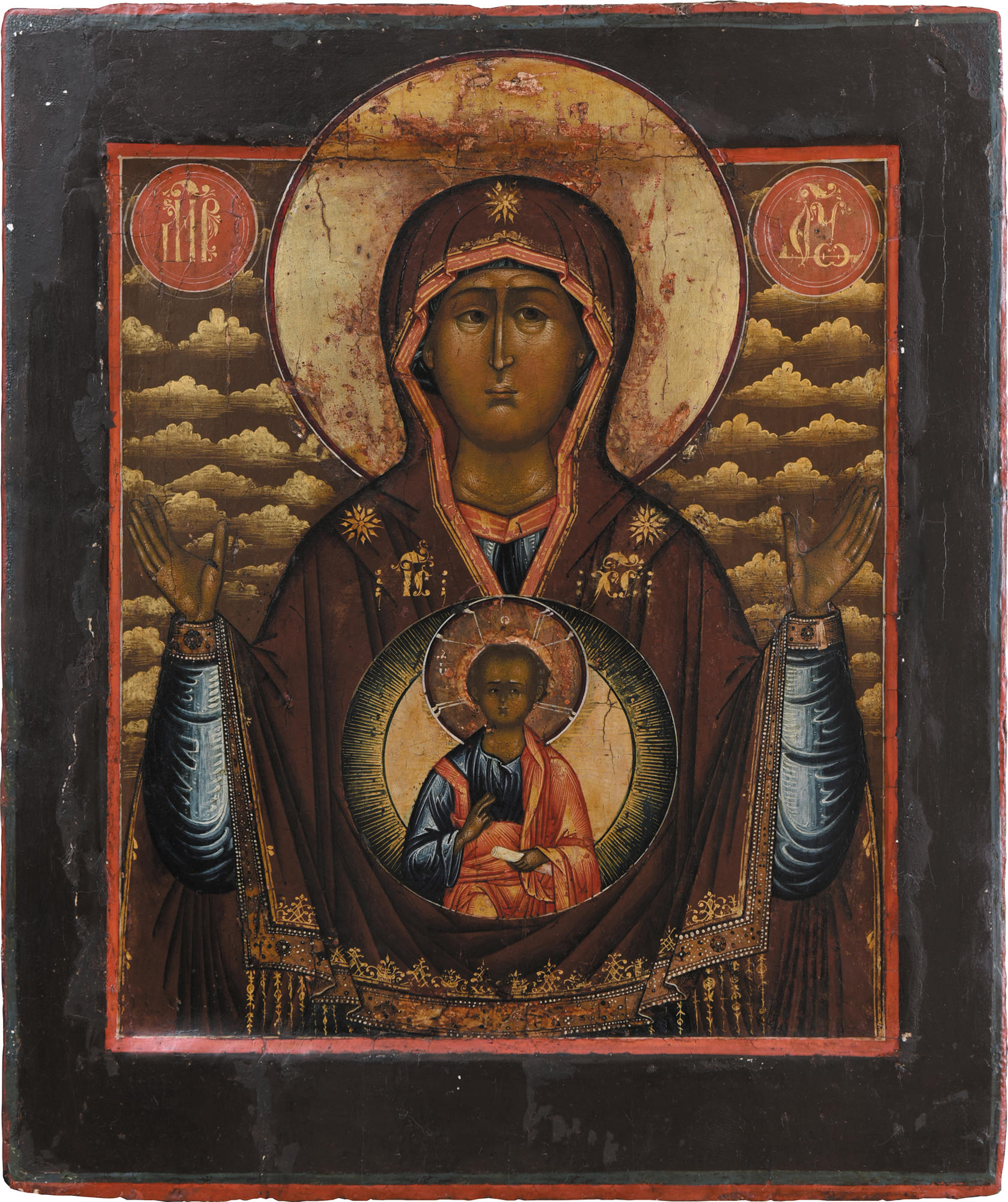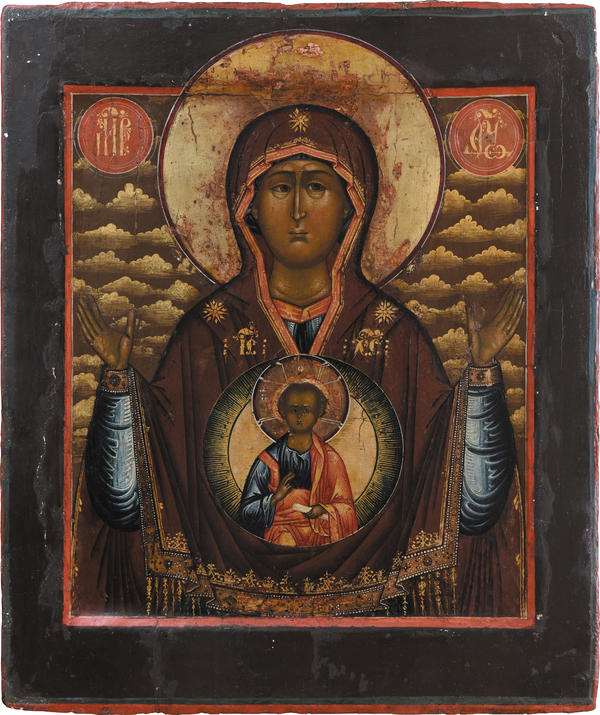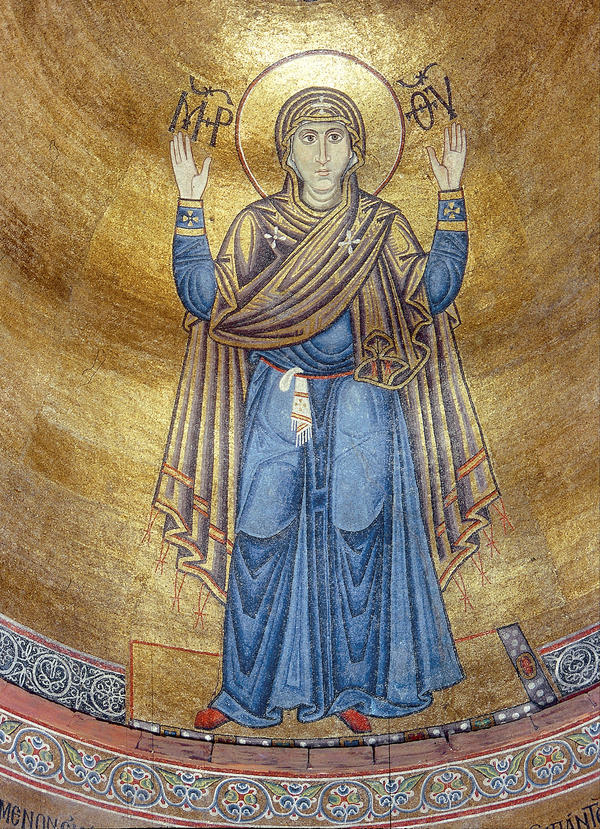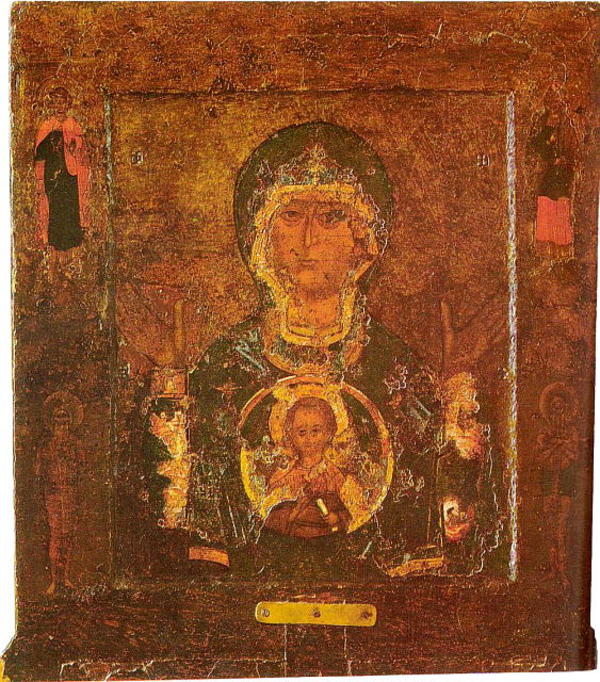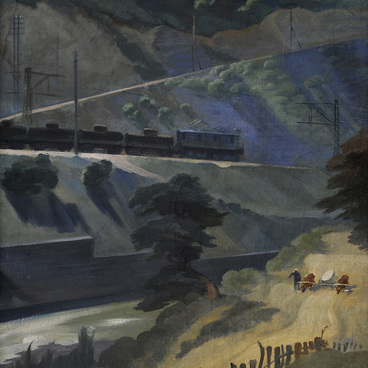The artistic image of the Holy Mother of the Sign (Incarnation) developed in Byzantine art by the mid-11th century. It combined two older types of the Holy Mother’s image: Orant and Nikopeia. The former shows God’s Mother with her arms raised and palms open, in a traditional gesture of an intercessory prayer; the latter holds baby Christ in her lap. The Holy Mother of the Sign symbolizes God assuming a human image — Christ on her bust is portrayed as if in the womb.
Holy Mother of the Sign
Время создания
2nd half of the 19th century. Middle Volga region
Размер
30x25 cm
30х25х3.5 cm
30х25х3.5 cm
Техника
Wood (single-piece, with a recess), two opposing sunk keys (lost). Canvas not seen, glue, tempera, gilding
Коллекция
Выставка
#3
Unknown Author
Holy Mother of the Sign
#2
#5
Holy Mother Orant. Mosaic in St. Sophia’s Cathedral in Kiev. 1130’s – 1140’s. Source: wikipedia.org
Pictures of the Holy Mother looking similar to the icon of the Sign appeared as long ago as in Early Christian art. One of the oldest dates back to the 4th century A.D.: the Holy Mother is depicted with outspread arms and Christ on a wall in the catacomb of Saint Agnes in Rome. In ancient Russia, the image first appeared in the 11th century, namely in a mosaic of St. Sophia’s Cathedral in Kiev (1030’s - 1040’s). In that image, the Holy Mother is depicted without baby Christ.
#8
Russia’s oldest icon of that type, Holy Mother of the Sign in Novgorod, dates back to the 1140’s. It is credited with the miracle, which occurred in 1170. The troops of Prince Andrew Bogolyubsky besieged Novgorod the Great; the forces were not equal, so the people of Novgorod turned to God, and the local archbishop heard a voice asking him to carry the icon all the way on the wall.
#6
Holy Mother of the Sign in Novgorod. 1140’s. Source: wikipedia.org
During the procession, an enemy arrow hit the face of the Holy Mother, and her eyes shed tears. The besiegers dropped their arms in panic and fled. The Novgorod troops followed the enemy and defeated it. Since then, the Holy Mother of the Sign was among the most revered Orthodox images.
#7
The Holy Mother of the Sign icon owned by the Orenburg Museum was painted by an artist from the midstream Volga region in the second half of the 19th century. The Holy Mother is set against a cloud background; on her bust, there is baby Christ in a round radiate halo — a typical feature of late Novgorod icon painting (in Moscow school icons, he would be portrayed without a halo). He blesses using two fingers of his right hand, and holds a scroll with his left hand.
#9
Orenburg Regional Museum of Fine Arts
читать дальшескрыть
00:00
00:00
1x
Holy Mother of the Sign
Время создания
2nd half of the 19th century. Middle Volga region
Размер
30x25 cm
30х25х3.5 cm
30х25х3.5 cm
Техника
Wood (single-piece, with a recess), two opposing sunk keys (lost). Canvas not seen, glue, tempera, gilding
Коллекция
Выставка
Открыть в приложении
Поделиться
